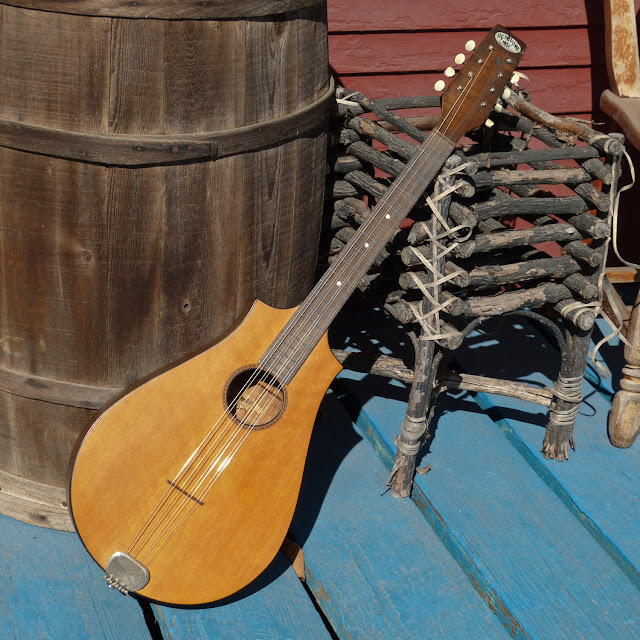1920s Regal Octofone
I've worked on a bunch of Octofones, now, and they're still just as peculiar to me as they were when I worked on my first one (that blog post details the history, too). Regal essentially designed an instrument built like a 4-string tenor guitar (and with a neck and neck joint suited to that tension) and then slapped an 8-string headstock on it and called it a day. They work fine if you're subtle about pick choice (thin, floppy) and work well with very light string gauges (this runs a 38w for its low G and only 10s for its high Es on a short, 21" scale).
You know who they work terribly for? The average modern player looking for an octave mandolin to abuse with 50w-13 string gauges and all in unison. Under that sort of tension these fall apart right-quick. If you do string them up correctly, however, you're rewarded with a lush, warm, full-sounding instrument that seems a lot larger than it is. I like them best tuned to "octave mandolin" range, too, and favor octave stringing like a Celtic bouzouki. That's what you're hearing in the soundclip and -- oh my -- does it sound sweet in person!
You can, of course, string these and tune these however you like, granted you don't kill it with tension. Uke tuning, "Chicago" DGBE tuning, tenor guitar CGDA tuning, and the like were all suggestions when this was a new instrument.
The owner of this box was lucky enough to have the time for me to work on this while he waited. He'd made an "appointment" a while back and reminded me the other day that he was coming -- with who knows what -- but that he was coming. Work commenced after a couple of setups on other gear and I gave this thing the works: a board plane and refret, a bolt to secure the doweled neck joint better, a "popsicle" brace addition below the fretboard extension, a crack repair, and a good setup. I can happily say it's the best-playing one I've held yet -- mostly due to the advantage of a dead-straight neck and modern frets. Most of these Octofones had at least some sort of icky warp in their necks.
The poplar neck has some neat flame in it.
Regal never bothered to really fine-sand or polish-up their fretboards (these were not expensive instruments), and as a result of the refret and its associated work, this dyed-maple board now looks the business.
The adapted banjo bridge is pretty low but there's still enough back-angle to drive it and keep the sound clean.
While the top is solid spruce and ladder-braced, the back and sides are solid birch.
These tuners leave a lot to be desired, but they've at least held-up well.

















Comments